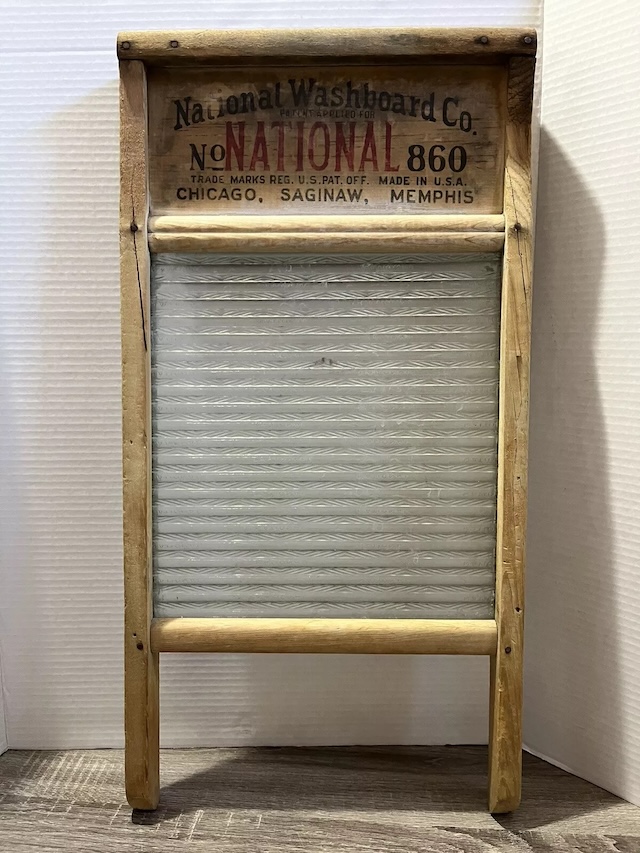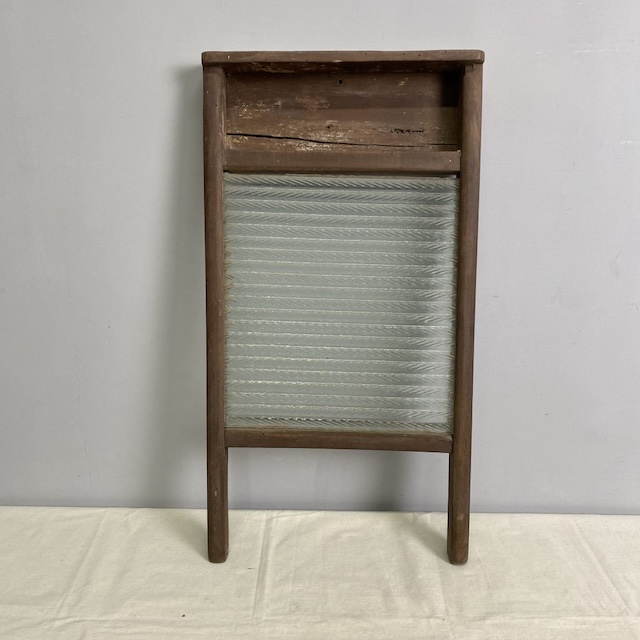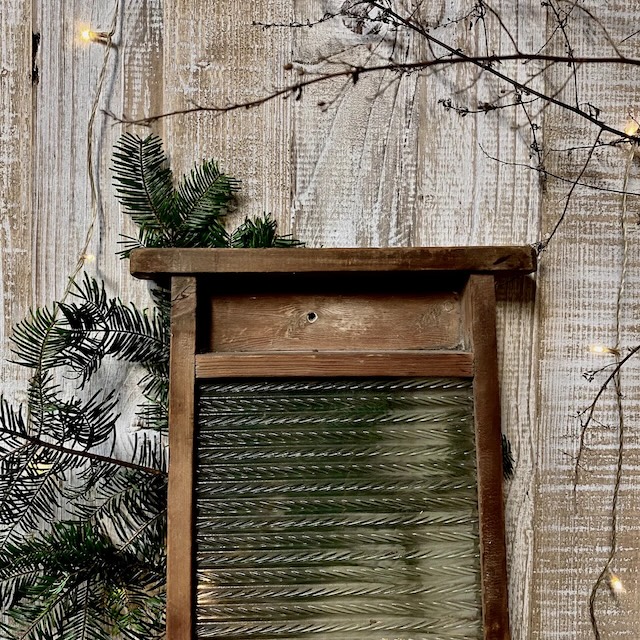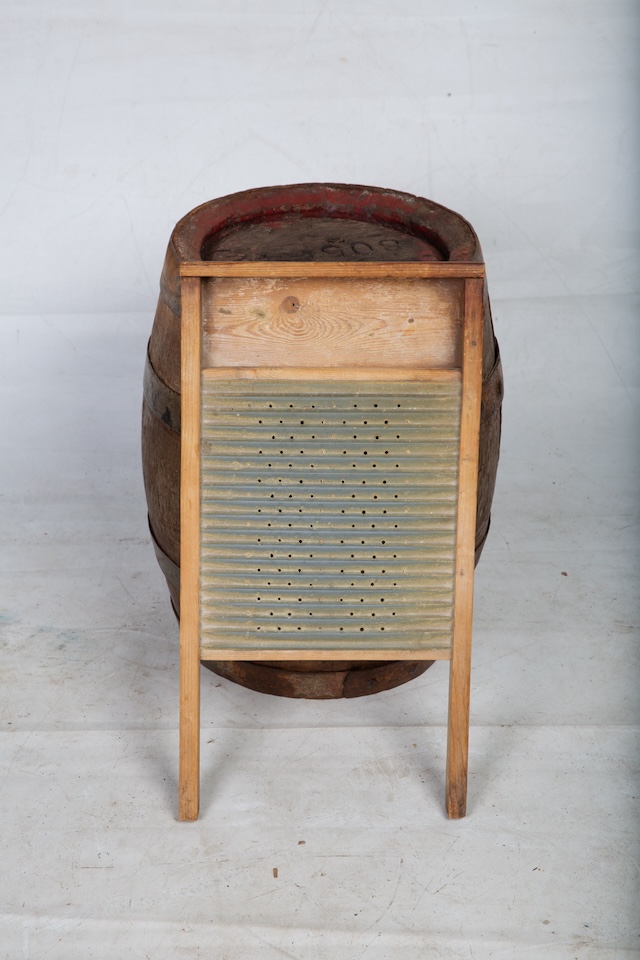In the corner of an attic or tucked away in an old shed, one might stumble upon a vintage washboard. For those who grew up in earlier decades, it’s instantly recognizable. Before the era of electric washing machines, this simple tool was a household essential, used to scrub clothes clean by hand. But do you know the fascinating history and stories tied to it? From its humble origins as a laundry tool to its unexpected role in music, the washboard is more than just an antique—it’s a symbol of resilience, tradition, and innovation.

The vintage washboard holds an important place in history as a revolutionary tool in the domestic sphere. It became a symbol of hard work, ingenuity, and an era before technology dominated daily chores. In this article, we will explore the rich history of the washboard, its impact on culture, and how it continues to resonate with us today.
The Birth of the Vintage Washboard: Humble Beginnings
The washboard may look like a simple wooden frame with a rippled metal or glass surface, but it was a true innovation during the 19th century. Before its invention, people often scrubbed clothes against stones or used their hands to wring and scrub stains out of garments—an exhausting and time-consuming process. The washboard changed all that.
The earliest records of a washboard date back to the 1830s in the United States when it was patented as a tool to aid in the laborious task of laundry. The washboard’s design was simple yet effective. Clothes were rubbed against the grooved surface while being doused with soapy water, allowing the textured ridges to dislodge dirt and grime. This innovation was portable, inexpensive, and allowed for a much more efficient laundry process compared to earlier methods.
Due to its affordability and practicality, the washboard quickly became a staple in households across America and beyond. For generations, it was a vital tool in daily life, making laundry day easier, even if still labor-intensive.

How It Worked: The Science Behind Simplicity
Although the vintage washboard may seem rudimentary compared to modern electric washing machines, its design was incredibly efficient for its time. The key to the washboard’s success was its ability to create friction. By soaking laundry in water and applying soap, users would press the fabric against the washboard’s textured surface. The corrugated ridges provided just enough abrasion to loosen dirt without damaging the fabric. This simple yet effective method made it the most reliable way to clean clothes for many years.
For those who used the washboard, the process was repetitive and physically demanding. The continuous rubbing against the rough surface caused strain on the arms and hands, but it was necessary to ensure the clothes were properly cleaned. Despite the challenges, the washboard became a key part of laundry routines for families in rural areas and communities without access to modern washing machines.
While it might seem like a tiring chore, using a washboard brought a sense of accomplishment. Once the laundry was cleaned and hung to dry, there was satisfaction in having completed the task using one of the few available tools of the time.

The Cultural Impact of the Washboard
While the vintage washboard was primarily a household tool, it found its way into other aspects of life as well. One of the most unexpected yet lasting impacts of the washboard was its role in music. In the early 20th century, especially in the southern United States, the washboard became an essential part of folk and blues music. Musicians fastened thimbles to their fingers and used the textured surface to create rhythmic, percussive sounds.
This innovation contributed to the rise of jug bands, zydeco, and skiffle music. The washboard’s unique sound, although originally a tool for household chores, helped shape a new genre of music that was both captivating and rhythmic. Over time, the use of washboards in music spread across different regions and cultures, cementing its place in the history of American folk music.
Even today, you might hear the distinctive scrape of a washboard in certain types of traditional music, a testament to the lasting influence this humble tool has had on global musical culture.
Washboard Memories: A Glimpse Into the Past
For many who lived through the 1940s, 1950s, and even the early 1960s, washboards were common fixtures in households, particularly in rural areas. Before electric washing machines became affordable, washboards were the go-to tool for doing laundry. Along with clotheslines and hand-cranked wringers, they made the chore of washing clothes an all-day affair.
People often recall memories of their mothers or grandmothers spending hours over a wash basin, scrubbing away the dirt from the week’s laundry. The washboard wasn’t just a tool—it was a symbol of the hard work and determination of past generations. Many families would gather for washdays, with children being assigned smaller tasks to help the process. At the end of the day, there was a deep sense of pride in seeing the clothes drying in the sun, knowing that the hard work had paid off.

Challenges and Repetitive Strain
Despite its efficiency, using a vintage washboard wasn’t without its challenges. The physical strain of constantly rubbing clothes against the board could be exhausting, leading to sore arms and hands. For larger loads of laundry, it was an even more taxing task. Care also had to be taken to avoid damaging delicate fabrics or injuring oneself by accidentally catching fingers on the rough surface.
Nevertheless, people adapted over time. Techniques were developed to minimize the strain, such as using a gentle, rhythmic motion or switching hands to avoid overworking one arm. While it wasn’t an easy task, the washboard represented resilience—a necessary tool that generations relied on, and one that built strength and endurance over time.

The Decline of the Washboard: Enter the Age of Machines
The mid-20th century saw the rise of electric washing machines, which automated many of the tedious tasks associated with laundry. The washing machine took over the heavy lifting of scrubbing, rinsing, and wringing. This new technology made laundry day much faster, and soon after, the vintage washboard began to fade into history.
As electric washing machines became more affordable, the washboard was slowly relegated to attics, sheds, or antique stores. However, for many people, the washboard still holds a special place as a reminder of the simpler, more hands-on way of life.
The Legacy of the Vintage Washboard Today
While the electric washing machine has become the norm in most households, the legacy of the washboard endures. In some remote parts of the world, washboards are still used as a means of washing clothes, especially in areas with limited access to electricity. In developed countries, vintage washboards have found a second life as decorative pieces or nostalgic relics of the past.
Furthermore, the washboard has not been entirely forgotten as a musical instrument. It continues to be a popular tool in folk and zydeco music, where its percussive sound adds a distinctive beat to traditional tunes. Washboard manufacturers, though fewer in number, still produce specialized versions designed for musical performances, ensuring that this unique instrument lives on in the cultural sphere.

Conclusion
The vintage washboard represents far more than just an antique tool. It is a symbol of resilience, resourcefulness, and community. For those who remember the days before electric washing machines, the washboard evokes fond memories of childhood, family, and simpler times—despite the hard work it required.
Today, the washboard continues to be an enduring legacy. Whether as a tool for laundry, a musical instrument, or a cherished antique, it reminds us of the ingenuity of past generations. The vintage washboard will forever be woven into the fabric of history, serving as a testament to human innovation and the enduring spirit of progress.
Contents
- The Birth of the Vintage Washboard: Humble Beginnings
- How It Worked: The Science Behind Simplicity
- The Cultural Impact of the Washboard
- Washboard Memories: A Glimpse Into the Past
- Challenges and Repetitive Strain
- The Decline of the Washboard: Enter the Age of Machines
- The Legacy of the Vintage Washboard Today
- Conclusion

